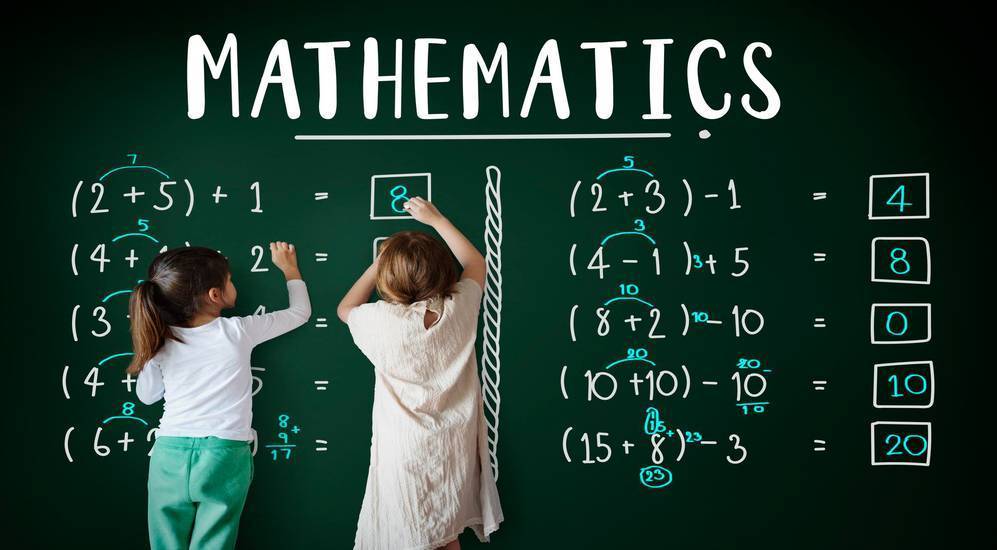


The field of mathematics has often been associated with rigid formulas, abstract concepts, and uninspiring routines. Many students struggle to connect the dots between what they learn in math classes and its real-world applications. To address this challenge, teachers must endeavor to make mathematics more engaging and relevant for their students. In this article, we draw inspiration from the innovative practices of Satyam Mishra, a mathematics teacher committed to providing equal educational opportunities for all, and explore five practical strategies that can help educators transform the way they teach math, fostering enthusiasm and understanding among students.
Debate is a valuable tool for fostering critical thinking, yet it is often underutilized in mathematics classrooms. Students are typically encouraged to engage in debates in subjects like English or social science but not in math. However, debating mathematical concepts can be incredibly beneficial.
Debate forces students to question and justify their mathematical reasoning. It compels them to analyze and defend their solutions, promoting a deeper understanding of mathematical concepts. For example, students might be able to calculate the mean and median using formulas, but may not fully comprehend the difference between the two. By engaging in debates, they can explore scenarios like choosing between mean and median to calculate the weight of students in a classroom. This challenges them to think critically and not merely follow instructions blindly.
Mathematics and science are intrinsically tied to debate, research, and experimentation. Encouraging students to engage in mathematical debates can enhance their problem-solving skills and help them appreciate the logic that underpins the subject.
Students often question the practicality of mathematical concepts they are taught in class. They may struggle to see the real-world applications of geometry, algebra, or calculus. As educators, it is crucial to address this issue by helping students connect the dots between abstract mathematical concepts and their everyday lives.
One way to achieve this is by asking the fundamental question, ‘Why?’ When students understand the practical implications of what they are learning, their engagement and enthusiasm naturally increase. For instance, by sharing the story of the mathematician Eratosthenes, who calculated the Earth’s circumference using grade 4 unitary methods and grade 5 geometry, teachers can demonstrate the real-world significance of these mathematical domains. This not only captures students’ interest but also helps them recognize the power of mathematics in solving real-life problems.
Calculus, often viewed as an abstract and intimidating subject, is, in fact, deeply rooted in the real world. Concepts like rates of change and integration have practical applications in fields ranging from physics to economics. The key to unlocking the potential of calculus lies in visualization.
Visualizing mathematical concepts helps students grasp abstract ideas and see how they relate to the physical world. For example, when studying calculus, students can understand how it is used to analyze the change in the surface area of a ripple over time. The concept of ds/dt (change in surface area with respect to time) can be visualized by observing the expansion of a ripple. Moreover, concepts from calculus are integral to understanding various phenomena, from projectile motion to changes in area, which is especially relevant in mensuration. By incorporating visualization, educators can demystify the abstract nature of mathematics and make it more accessible and engaging for students.
Mathematics is not confined to textbooks and classrooms; it is a living, dynamic subject with real-world applications. To emphasize this, educators can link current affairs to mathematical concepts, providing students with an opportunity to see math in action in the world around them.
For instance, when discussing the visit of India’s Prime Minister Narendra Modi to the United States, students can be encouraged to compare the sizes and populations of both countries. Through this exercise, they can realize that India is roughly one-third the size of the USA and that the USA has approximately one-fourth the population of India. This practical exercise demonstrates the utility of fractions in real-world scenarios and shows that math is not just an abstract concept confined to textbooks.
By incorporating current affairs into math lessons, teachers can help students overcome their fear of mathematics and encourage them to explore mathematical problems in the context of the world they live in. This approach fosters a sense of relevance and purpose in learning math.
To inspire students and make mathematics more engaging, educators can celebrate the work of renowned scientists and mathematicians. By showcasing the achievements of great minds in the field, teachers can illustrate the profound impact of mathematics on our world.
One way to do this is by discussing the problems that brilliant mathematicians and scientists have investigated and the groundbreaking solutions they have discovered. The Nobel Prize website serves as an excellent resource for introducing students to the work of accomplished scientists.
By studying the accomplishments of luminaries like Albert Einstein, Marie Curie, and Sir Isaac Newton, students can gain a deeper appreciation for the significance of mathematics and science in driving progress and innovation. This approach not only offers role models for aspiring mathematicians and scientists but also underscores the tangible impact of mathematical thinking on our daily lives.
Empowering Students through Engaging Mathematics Education
Mathematics education should be a dynamic and engaging journey that equips students with the skills and knowledge they need for both academic and real-world success. Satyam Mishra’s innovative teaching strategies, as outlined in this article, provide a blueprint for making mathematics more accessible, engaging, and relevant.
By encouraging mathematical debate, asking ‘why?’ to uncover real-world relevance, promoting visualization, relating math to current affairs, and celebrating the achievements of scientists, educators can transform the way students perceive and interact with mathematics. Ultimately, a mathematically engaged and empowered generation of students is better equipped to tackle the challenges of the future, armed with the problem-solving and critical-thinking skills that mathematics can provide.

Entrepreneurship is all about telling your story. In SwiftNlift Education Business magazine, we promote and share stories and adventures of young and successful entrepreneurs who are overcoming startup challenges on their way to success. We allow digitally linked content to be uploaded and distributed globally.
Copyright © 2023 Swiftnlift Media And Tech LLP All rights reserved